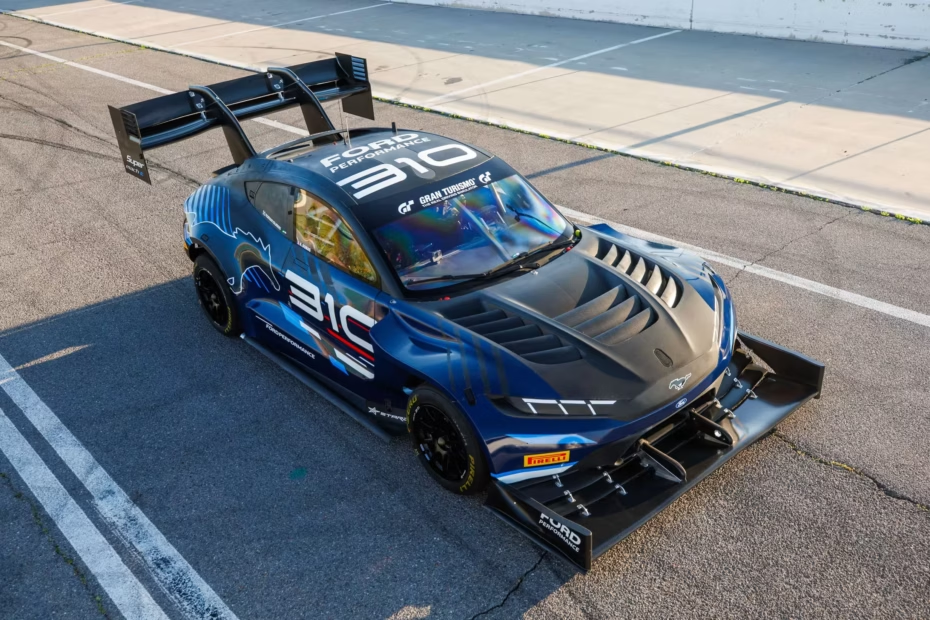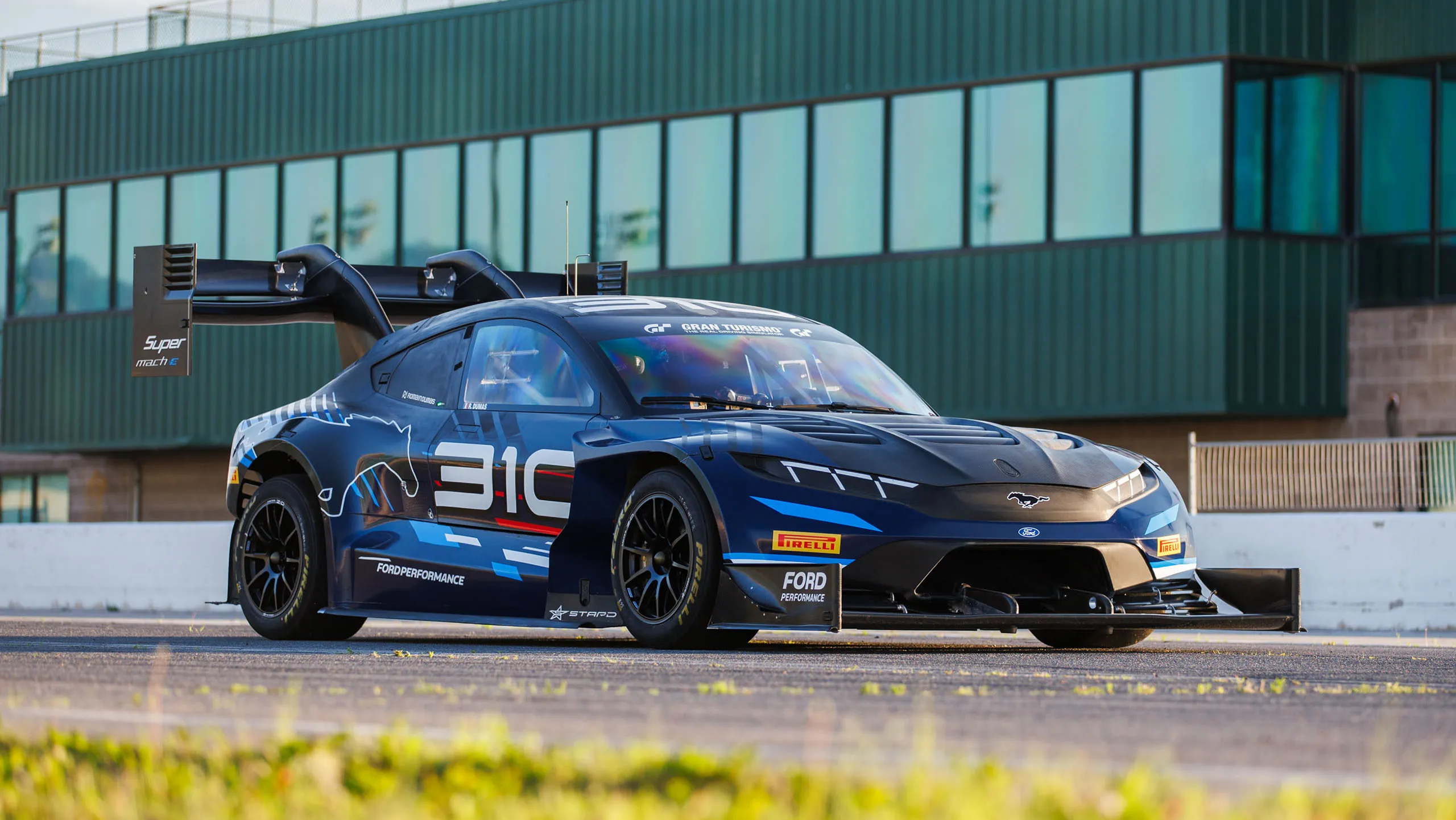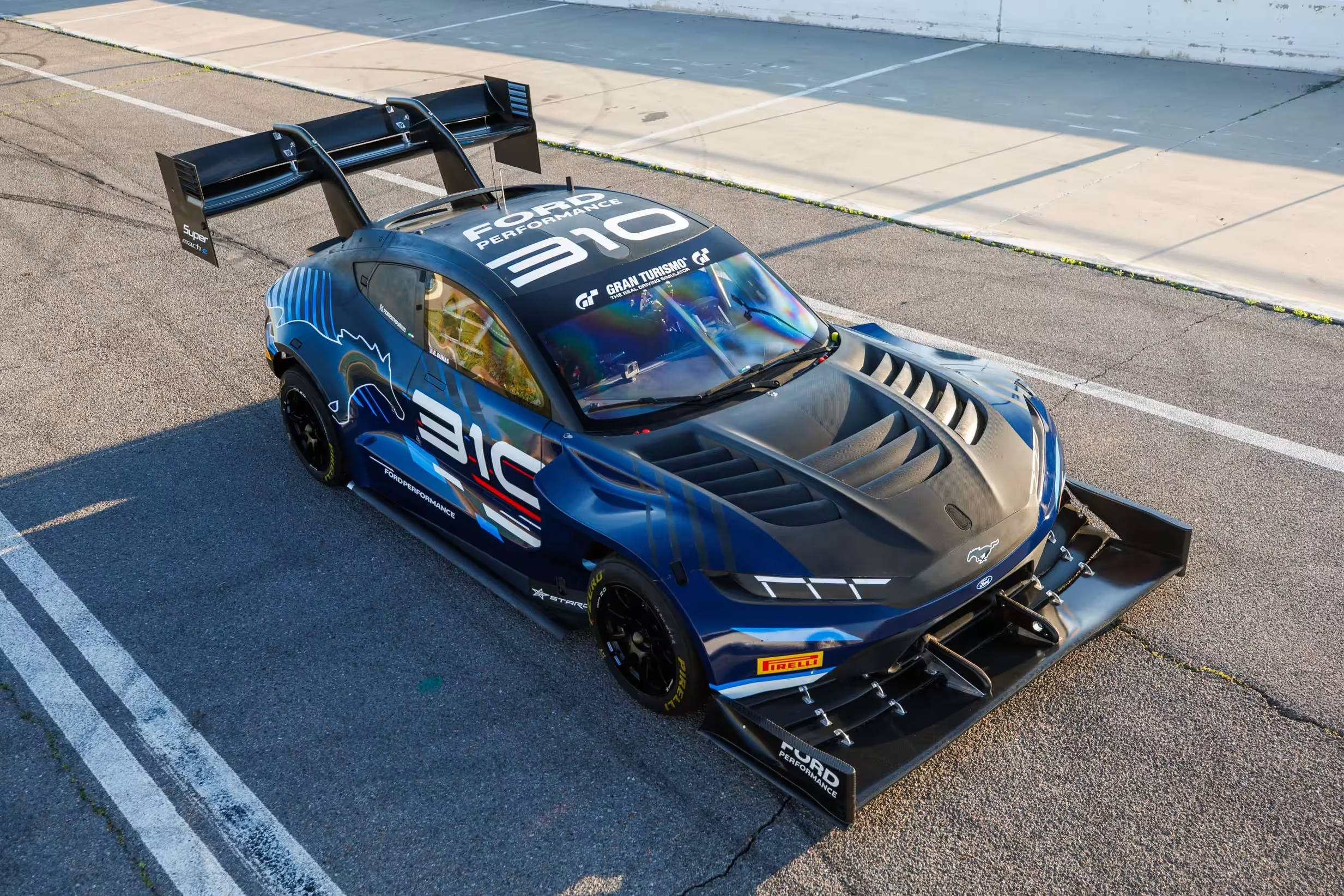The world of high-performance electric vehicles has reached a new level of madness. Ford Performance, the division that’s not afraid to dare, has unveiled its newest weapon for the track, and holy hell, this is serious business. The Ford Super Mustang Mach-E isn’t just a car—it’s a race prototype built with one single purpose: to be the fastest where asphalt (or the lack of it) pushes the limits.
What Makes This Mach-E So Radical?
Forget the electric family SUV you know. This Super Mustang Mach-E is a beast built from the ground up, focused on extreme performance for mountain climbs. With aggressive active aerodynamics and competition-level carbon brakes, every component screams “speed” and “control.” It’s the natural evolution of Ford’s approach to electrifying performance, following in the footsteps of prototypes like the SuperVan and SuperTruck.
Ford Performance’s engineering team, spread across the globe, pulled off the feat of designing and building this monster in less than seven months. That’s a crazy fast pace for such a complex race car. It arrived at the event location just six weeks before the green flag, demanding an intensive testing regimen under challenging conditions, including snow at the mountain’s summit. That’s some serious dedication!
Raw Power: Up to 2,250 Electric Horsepower
Here’s the part that really drops your jaw: the power. The version that will tackle the legendary Pikes Peak hill climb in 2025 is equipped with three electric motors, delivering a combined output of 1,421 horsepower. That’s a seriously respectable number, don’t you agree?
But Ford revealed there’s an even more extreme setup with four motors, capable of unleashing an incredible 2,250 total horsepower. Two thousand two hundred and fifty horsepower! That’s power on par with the most exclusive hypercars on the planet. To put it in perspective, electric hypercars like the Pininfarina Battista also hit astronomical numbers, showcasing the potential of electrification at the pinnacle of performance.
This absurd amount of instant power, characteristic of electric motors, will be crucial for attacking the hairpins and straights of the mountain. It’s a gut-punch of acceleration that few cars, electric or combustion, can match.
Aerodynamics That Glue the Car to the Ground
With 1,421 or 2,250 horsepower at its disposal, keeping the Super Mustang Mach-E stuck to the ground is an absolute priority. Ford’s solution is an active aerodynamic system that generates outrageously high downforce levels. At Pikes Peak, with the altitude and thin air, it still manages to produce about 6,900 pounds (3,100 kilograms) of aerodynamic pressure—nearly double the car’s weight (approximately 3,440 lbs / 1,560 kg).
On a flat, sea-level track, where air density is higher, the aerodynamics can be adjusted to generate up to 12,000 pounds (5,400 kilograms) of downforce. That’s more downward force than many top-tier race cars, including some formula cars. This brutal aerodynamics package combined with a new swing-arm suspension design (different from the previous SuperTruck) and 3D-printed skid plates aims to keep the car stable and fast over track imperfections. It’s cutting-edge engineering to make sure all that power is usable.
True Racing Components
This is not a Mach-E with a few tuning parts. It’s a race car built from scratch. Most of what you see is custom-made for performance. The brakes, for example, aren’t steel—they’re carbon-ceramic, with technology closer to that found in GT3 race cars than street vehicles. This ensures extreme stopping power and resistance to fade.
The suspension, as mentioned, is a new swing-arm design built to handle the forces and roughness of a mountain climb like Pikes Peak. Few production components remain—only details like door handles and windshield wipers. This shows how dedicated the project was to creating a pure race machine. It’s Ford Performance showing that when they want to, they make a real track car, damn it.
The 2025 Pikes Peak Challenge
The stage for this electric monster is the International Hill Climb at Pikes Peak, a legendary event that pushes drivers and machines to the limit. Ford Performance’s official driver, Romain Dumas, will be behind the wheel of the Super Mustang Mach-E at the 2025 edition, aiming to beat the time set by the SuperVan 4.2 the previous year. It’s a continuous quest for records and excellence.
Ford’s participation in Pikes Peak with high-performance electric prototypes has become a recent tradition, showcasing EV potential in extreme conditions. In 2024, the F-150 Lightning SuperTruck had a setback but still showed speed. The lighter and more powerful Super Mustang Mach-E promises to be even faster. Like other cars chasing records on challenging tracks, the focus is on total optimization for the course.
The 2025 race, scheduled for June 22, will be the proving ground for this new prototype in the Open category. It’ll be fascinating to see how it handles the 156 turns and the mountain’s rising altitude. Ford is proving that electrification doesn’t mean giving up adrenaline and top-level competition. Meanwhile, in the world of more affordable electric sports cars, models like the Peugeot E-208 Electric GTI also show that electric performance is reaching different segments.
Frequently Asked Questions About the Super Mustang Mach-E:
- What is the maximum power of the Ford Super Mustang Mach-E race car? The most extreme variant has 2,250 HP with four motors.
- How many motors will the Pikes Peak version use? The 2025 hill climb version will have three motors, totaling 1,421 HP.
- How much downforce can it generate? Around 6,900 lbs (3,100 kg) at Pikes Peak; up to 12,000 lbs (5,400 kg) on a flat track.
- Are the brakes standard? No, they are carbon-ceramic brakes, closer to the technology used in GT3 race cars (External Source 1: FIA GT3 Regulations).
- Where will it compete? The main focus is the International Hill Climb at Pikes Peak, in June 2025 (External Source 2: Official Pikes Peak Site).
Look, in my humble opinion, seeing Ford invest in such radical projects like this Super Mustang Mach-E is a hell of a positive sign. It shows that electrification doesn’t have to be boring or limit performance. On the contrary, it can take power and aerodynamics to levels that were hard to achieve with combustion engines. It’s a demonstration of engineering capability and a commitment to motorsport, even in its most electrified form. It’s proof that electric cars can be incredibly fast and exciting, especially when built without the shackles of a mass-production vehicle. It’s a future of speed that, frankly, gets me really excited.
And you, what do you think of this Ford electric monster? Do you think it will break the Pikes Peak record? Leave your comment below!
Author: Fabio Isidoro
Fabio Isidoro is the founder and editor-in-chief of Canal Carro, where he has been writing about the automotive world since 2022. Passionate about cars and technology, he began his journey on the HospedandoSites portal and today dedicates himself to creating technical content and comprehensive analyses of national and international vehicles. 📩 Contact: contato@canalcarro.net.br







